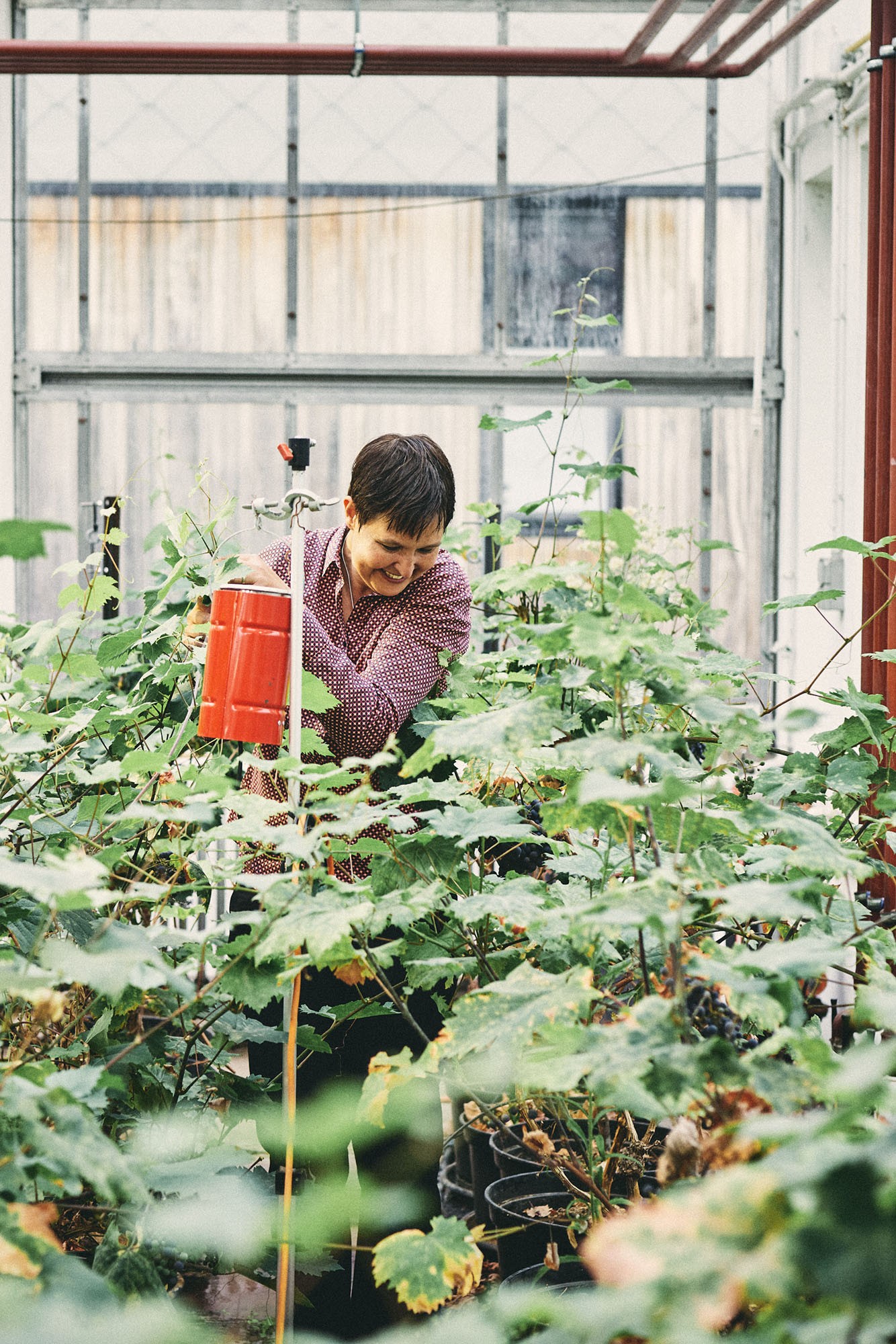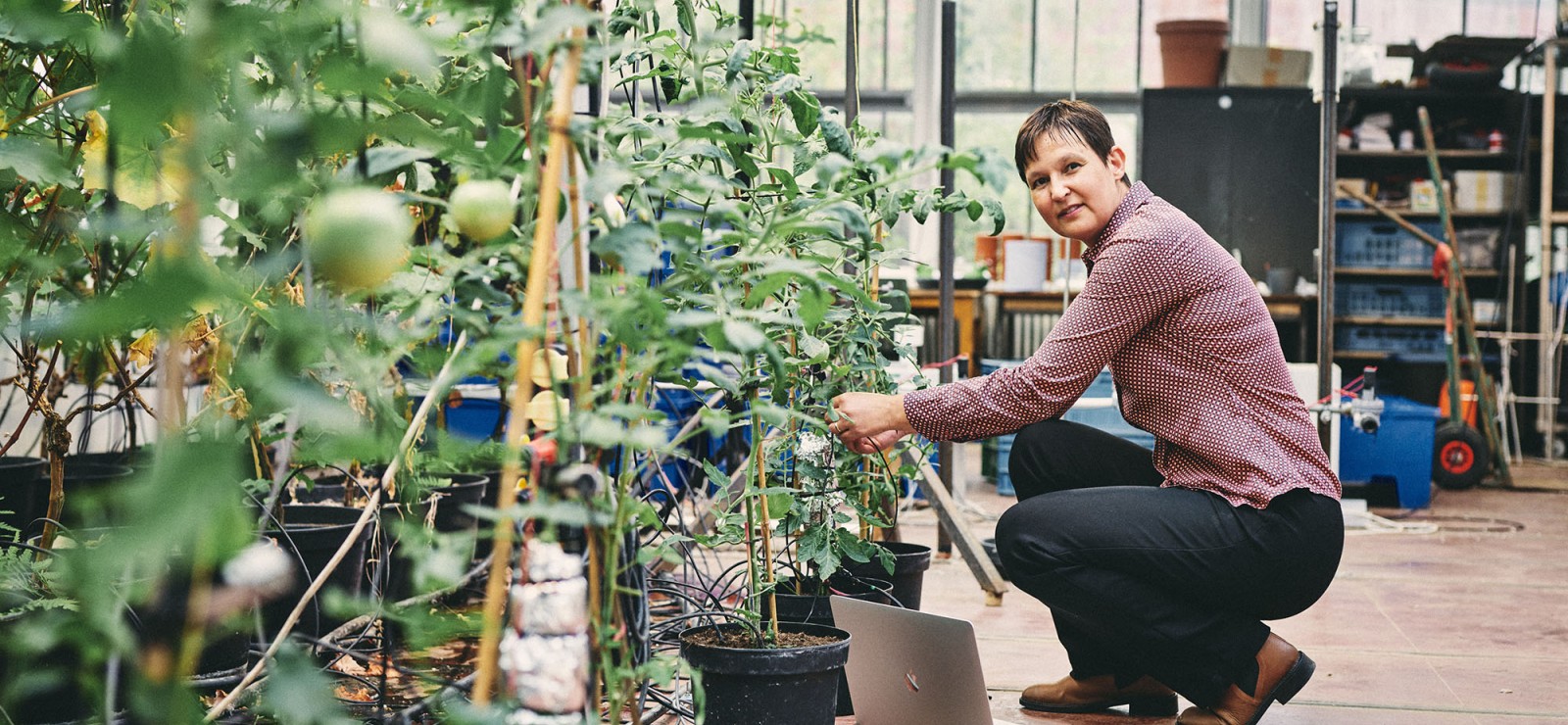“Most people water their plants too much. Or too little. Knowing exactly how much water to give them is not easy,” says Professor Kathy Steppe. She uses sensors to meticulously measure when plants need water and how much.
“Most people water their plants too much. Or too little. Knowing exactly how much water to give them is not easy,” says Professor Kathy Steppe. She uses sensors to meticulously measure when plants need water and how much.
Kathy places several sensors on, in and around plants to determine exactly what the plants’ needs are. It starts with a sap flow sensor, which places a heating element around a plant’s stem and measures the heat balance. “When water flows within the vessels or ‘tubes’ of a plant, a transfer of heat takes place. Based on this, our sensor can measure how much water the plant consumes. With that information, we can determine down to the milliliter how much water you should give the plant.”
Hanging leaves
Are you giving your plant too little water? Then the leaves start drooping - indicating wilting - and may even turn brown. “Through our research we’ll know when your plant has had too little water for several days. The water that flows up through the plant within the vessels are continuous water columns - think of them as straws that distribute the water through the plant. Just like straws in an empty glass, they only in suck air when there is no water. At that point, the water columns break.”
That process makes a noise. “When this water column breaks, our sensor picks up a kind of clicking sound,” Kathy explains. “The more often we hear this sound, the more water columns will have broken, and the smaller the chance your plant will survive. By the time too many water columns have broken, your plant cannot be saved.”
Houseplants
In other words: you can hear a plant begging for water. “Only via an acoustic sensor of course. Unfortunately, you can’t hear it with the naked ear, it’s not loud enough for that. The sensor is about the size of a coin and works like a doctor’s stethoscope.”
Sap flow sensors are already being used by some growers, but the acoustic sensor is not yet available to the general public. “I hope that is possible in the future. Personally, I would also find it useful, because I have to admit: some of my plants are not doing so well (laughs). In the meantime, you'd better feel the soil of your houseplants to see if they need watering.”

Kathy Steppe graduated as a bio-engineer in 2000. She completed her PhD in 2004, and in 2008 she became a professor at the Faculty of Bioscience Engineering where she heads the Plant Ecology lab. Her favorite spot at Ghent University is the inner garden of the faculty of Bioscience Engineering because there’s a tree there that’s growing thanks to the sensors she is researching. You can also follow the tree yourself on TreeWatch.net.
Read also
A ‘tree’mendous tale of natural resilience
What if trees could talk? Well, every so often they do. In doing so, they give a glimpse of the past. For example, a 250-year-old oak in the castle grounds at Elverdinge near Ypres tells us more about the First World War. The tree survived this war, despite the incessant bombs. The Woodlab at Ghent University tells us the touching story of this oak tree.
Nine things you never knew about mushrooms (or should we call them fungi? Or moulds?)
Autumn is the season for mushrooms – they are everywhere, and certainly growing in abundance in forests. But did you know that the mushrooms you see are just a very small part of a vast, gigantic, mainly subterranean network? And that without this network, other plants simply wouldn’t be able to survive?
Birds return from the south: how do they know where to go?
De komst van de lente betekent ook de terugkeer van heel wat trekvogels na hun overwintering in warmere landen. Maar hoe vinden die vogels, in tochten die vaak duizenden kilometers lang zijn, hun weg? Niet met Waze of Google Maps, maar wel dankzij de zon, een soort ingebouwd kompas én snelwegen.
International top recognition for researcher who is combating ‘hidden’ hunger
From now on, Professor Dominique Van Der Straeten can call herself a fellow of the prestigious American Association for the Advancement of Science (AAAS). This international recognition honours researchers who are making an invaluable contribution to science and its application. In the case of professor Van Der Straeten, it recognises her research, which aims to reduce ‘hidden’ hunger and the consequences of climate change.




